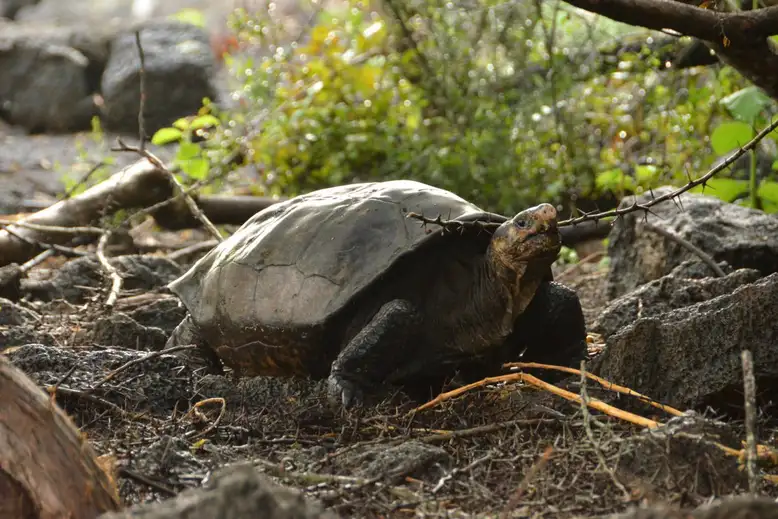
🐢 Giant tortoise extinct for 100 years is actually alive
A giant tortoise believed to be extinct for more than a century is actually alive in the Western Galápagos. In order to be sure, scientists used genetic sequencing to confirm their finding.
Share this story!
For over a century, scientists have believed the Fernandina Giant Tortoise - Chelonoidis phantasticus - species to be extinct due to regular volcanic eruptions on their native island - the Fernandina isle in the Galápagos.
In 2017, conservationists started doubting the turtle to be extinct when some park rangers found traces of the tortoise on the island. Only two years later, Princeton researchers found the lone female tortoise named Fernanda.
Scientists weren't 100 percent sure that Fernanda was part of the thought-to-be-extinct tortoise family because the only other individual was discovered back in 1906 and was a single male. Fernanda had a different shaped shell and looked much smaller.
In order to be sure, the researchers compared Fernanda’s DNA with the lone males DNA. The results proved that both tortoises belong to the same family.
“We simultaneously were able to show the connection between Fernanda and the other Fernandina tortoise, and also the distinctiveness of those two tortoises from species that we see on other islands,” Stephen Gaughran, a Princeton University researcher and co-author of the paper, told New Scientist. “I was surprised, and then once it sank in, I was really excited about it.”
Due to the island's harsh terrain, it’s difficult for the researchers to explore it but they are hopeful there’s other individuals like Fernanda living on the island. Fernanda is 50 years old today and the team of researchers believe she will live until she is 200 years old.
Source study: Communications Biology — The Galapagos giant tortoise Chelonoidis phantasticus is not extinct
Picture: Galapagos Conservancy via New Scientist
By becoming a premium supporter, you help in the creation and sharing of fact-based optimistic news all over the world.


